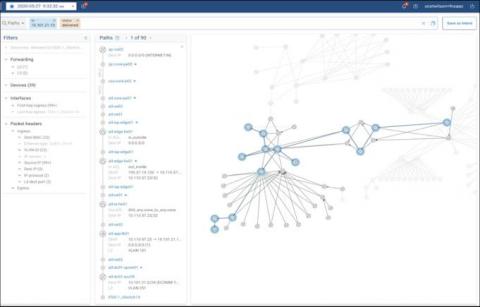Security | Threat Detection | Cyberattacks | DevSecOps | Compliance
Latest Posts
Make the Headlines for Good News - Not a Security Mishap Due to Config Drift
The risk of config drift is ever present. And when you consider that modern enterprises have incredibly complex and ever-changing networks with thousands of devices, from routers to firewalls to switches, running billions of lines of config, it’s easy to understand why. Networks are constantly being changed by people - who though well intentioned - make mistakes. A configuration change that accomplishes the immediate goal may take the network out of compliance, but how would anyone know?
Where is Your Zone-to-Zone Connectivity Matrix?
If you’re like most of the complex IT shops we talk with, you probably don’t even have a current security matrix to store anywhere – file cabinet or data folder. The connectivity matrix is essentially the company security posture, but almost no one has a comprehensive way to visualize and easily understand the connectivity status between the various configured security policies (zone-to-zone policies).
Forward Networks Wins "Enterprise Cloud Computing Software of the Year" Award in 2021 Mobile Breakthrough Awards Program
New Survey Reveals Misalignment on Zero Trust Initiatives Between Management, IT, and Security Practitioners
An "easy button" for blast radius identification and threat remediation
When your organization is inevitably hit by a cyberattack, you want your security operations engineers to move lightning fast to identify the scope, duration, and impact of the attack, contain the disruption and prevent any costly or lasting damage. To do that, they need access to actionable information about everything that’s in your network — where devices are located, how they interact, and all the relevant details about their configuration and state.
How to Safely Integrate Networks During Mergers and Acquisitions
I recently published a piece in Dark Reading covering the network security challenges of M&A activity. As we ease the restrictions put in place to combat COVID-19, we’re expecting to see business activity including M&A pick up speed, it’s important that the implications of integrating networks are fully understood to ensure that the expected business benefits are achieved as soon as possible.
Forward Networks Named 2021 SaaS Awards Winner for Best Enterprise-Level SaaS Product
Hey buddy - wanna buy a zero trust?
In the past couple of weeks, I’ve had the opportunity to attend two technology events IN PERSON!!! Seeing people “mask-to-mask” has been fun and educational. Forward Networks recently exhibited at Black Hat in Las Vegas and AFCEA TechNet Augusta. Obviously, security was the topic at Black Hat, but it was also top of mind for TechNet attendees, and attendees at both events stressed the need for better network behavioral insight.
You Can't Secure What You Can't See
Between us — there’s no such thing as zero trust — it’s a catchy term used to describe a very complicated approach to security. But just because marketing loves the term doesn’t mean we should ignore the concept. The idea of zero trust is the assumption that users should be granted the least access possible to be productive, and that security should be verified at every level with consistent protection measures.





